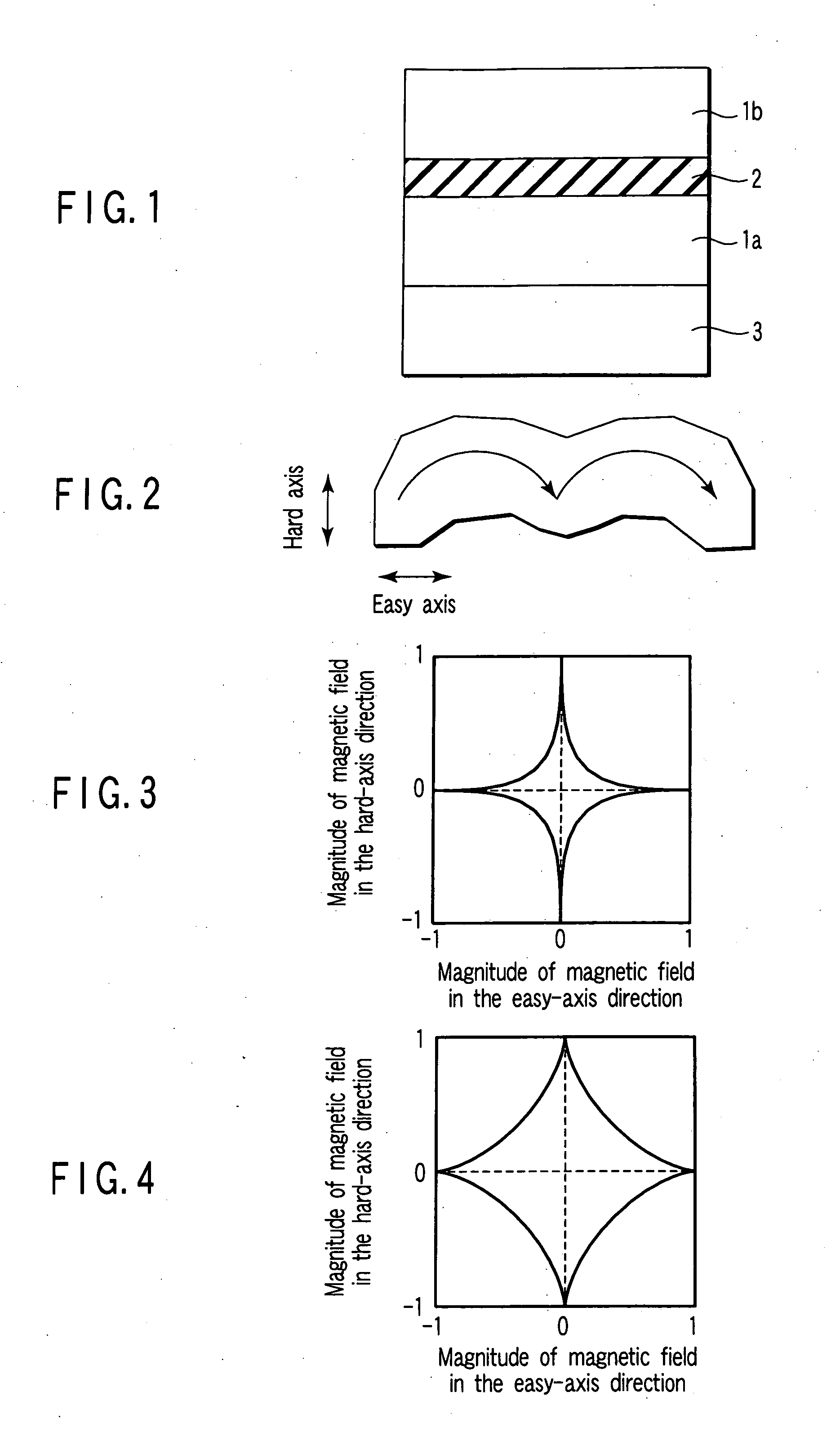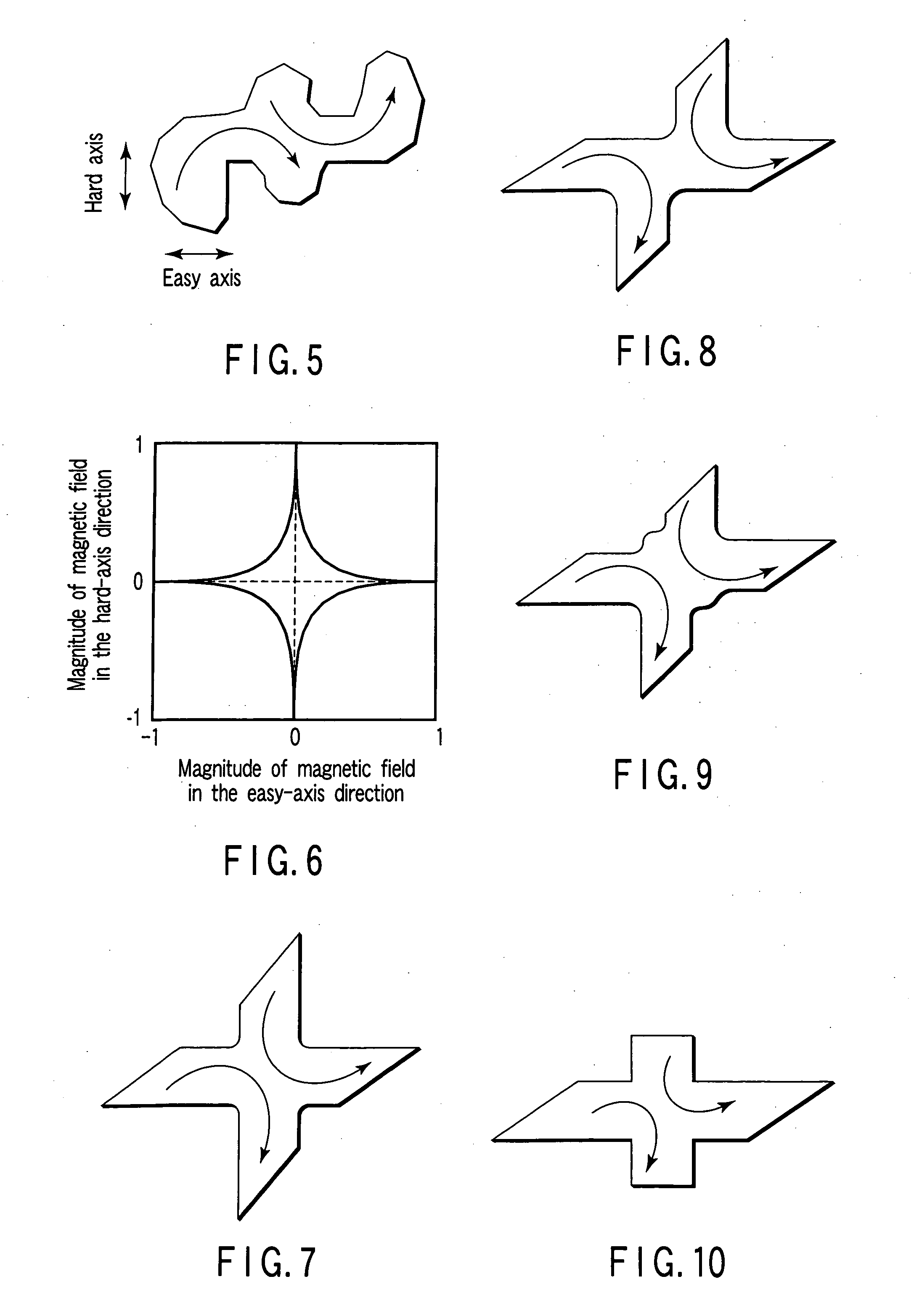Magnetoresistive element
- Summary
- Abstract
- Description
- Claims
- Application Information
AI Technical Summary
Benefits of technology
Problems solved by technology
Method used
Image
Examples
first embodiment
(2) First Embodiment
[0134]FIG. 2 shows a planer shape of a free layer of a magnetoresistive element according to a first embodiment of the present invention.
[0135] In this embodiment, the free layer of the magnetoresistive element has a planar shape formed by combining two characters C with each other. Specifically, the two characters C are disposed to be oriented in the same direction, to be oriented on a curved face in the hard axis direction, and to be adjacent to each other in the easy axis direction. The two characters C each have a planer shape approximate to character E or character M as a whole.
[0136] In this case, the residual magnetization of the free layer of the magnetoresistive element and the magnetization pattern in a region in which the magnetic field in the hard axis direction is zero or small each are comprised two C shape magnetic zones.
[0137]FIG. 3 shows a switching curve of the magnetoresistive element having the planar shape of FIG. 2. FIG. 4 shows a switchi...
second embodiment
(3) Second Embodiment
[0143]FIG. 5 shows a planar shape of a free layer of a magnetoresistive element according to a second embodiment of the present invention.
[0144] In this embodiment, as in the first embodiment, the free layer of the magnetoresistive element has a planar shape formed by combining two characters C with each other. However, the two characters C are oriented in different directions from each other, unlike the first embodiment. Specifically, the two characters C are combined with each other at their back, and are oriented in opposite directions to each other. Further, a curve face of the character C is comprised a shape such that the curved face is oriented in the hard axis direction, and is slightly shifted in the easy axis direction. The two characters C each have a planar shape approximate to character Z as a whole.
[0145] In this case as well, the residual magnetization of the free layer of the magnetoresistive element and a magnetization pattern in a region in w...
third embodiment
(4) Third Embodiment
[0151]FIG. 7 shows a planar shape of a free layer of a magnetoresistive element according to a third embodiment of the present invention.
[0152] In this embodiment as well, the free layer of the magnetoresistive element has a planar shape formed by combining two characters C with each other. The two characters C are oriented in different directions from each other, are combined with each other at their back, and are oriented in opposite directions to each other. In other words, the free layer of the embodiment has a shape such that two parallelograms are crossed each other.
[0153] Since the free layer has the shape such that the two parallelograms are crossed each other, the shape of a distal end of the free layer is comprised a tapered shape which is obliquely cut off instead of a rectangle.
[0154] An angle of the distal end (acute angle portion) of the free layer is set to be a value in a range of 20° or more and less than 90°.
[0155] The angle of the distal en...
PUM
 Login to view more
Login to view more Abstract
Description
Claims
Application Information
 Login to view more
Login to view more - R&D Engineer
- R&D Manager
- IP Professional
- Industry Leading Data Capabilities
- Powerful AI technology
- Patent DNA Extraction
Browse by: Latest US Patents, China's latest patents, Technical Efficacy Thesaurus, Application Domain, Technology Topic.
© 2024 PatSnap. All rights reserved.Legal|Privacy policy|Modern Slavery Act Transparency Statement|Sitemap



